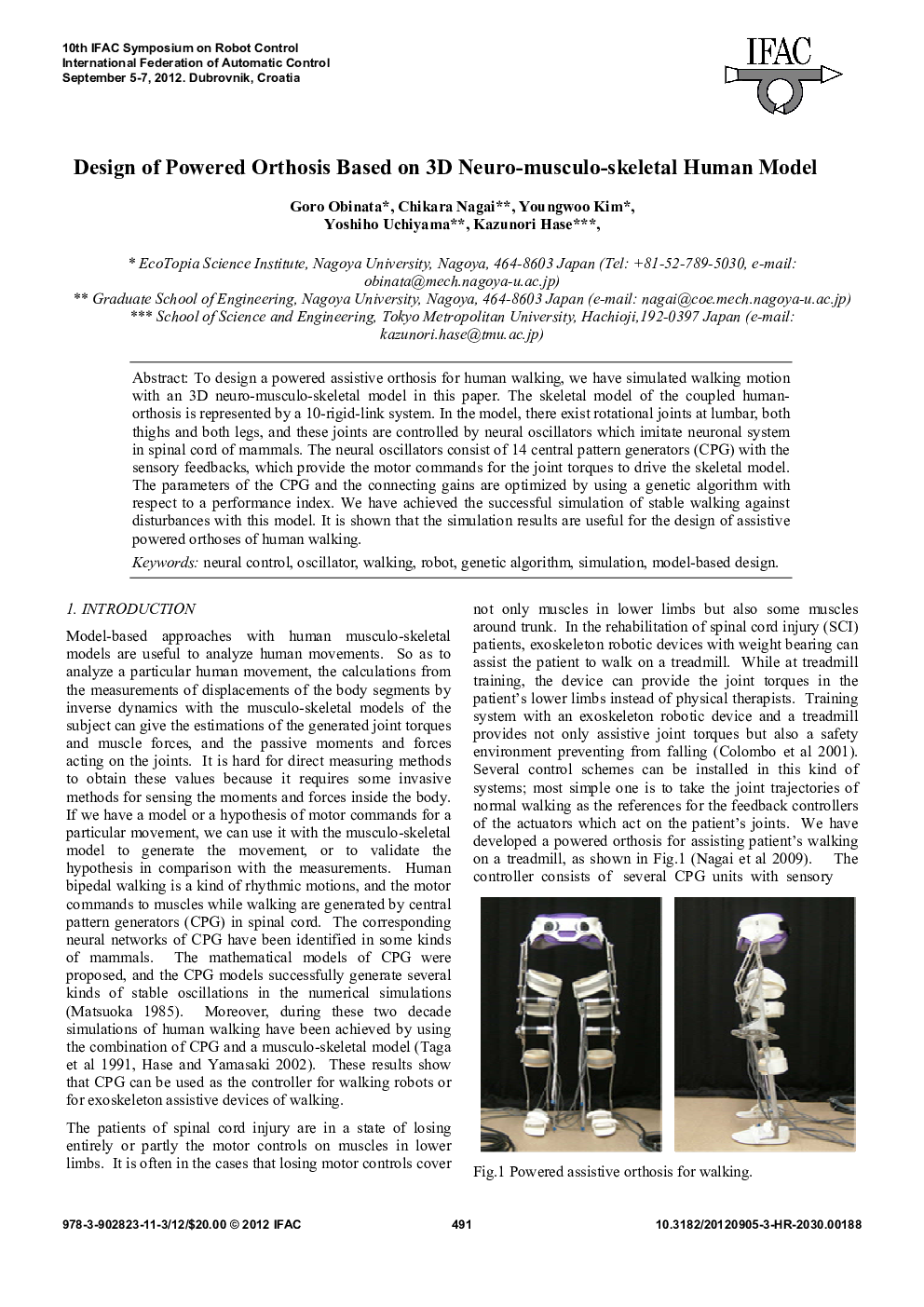| Article ID | Journal | Published Year | Pages | File Type |
|---|---|---|---|---|
| 717471 | IFAC Proceedings Volumes | 2012 | 7 Pages |
To design a powered assistive orthosis for human walking, we have simulated walking motion with an 3D neuro-musculo-skeletal model in this paper. The skeletal model of the coupled human-orthosis is represented by a 10-rigid-link system. In the model, there exist rotational joints at lumbar, both thighs and both legs, and these joints are controlled by neural oscillators which imitate neuronal system in spinal cord of mammals. The neural oscillators consist of 14 central pattern generators (CPG) with the sensory feedbacks, which provide the motor commands for the joint torques to drive the skeletal model. The parameters of the CPG and the connecting gains are optimized by using a genetic algorithm with respect to a performance index. We have achieved the successful simulation of stable walking against disturbances with this model. It is shown that the simulation results are useful for the design of assistive powered orthoses of human walking.
